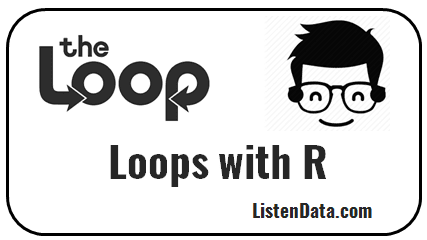

As you can see below, the only way I could figure to match ALL years was to run the for loop twice, once to identify any matches on year and a second time to remove any non-matches.

Here we go: y parallelize on your local computer This post gave me the idea to paste all of the year columns together so I only have to apply grepl() to one column. It is only the “result” of local() call that I will allow updating y.
#SAPPLY FOR LOOP IN R CODE#
I’ll wrap up the “iteration” code inside local() to make sure it is evaluated in a local environment in order to prevent it from assigning values to the global environment. I’ll first show a version that resembles the original for-loop as far as possible, with one minor but important change. The answer almost always involves rewriting the for (.) loop into something that looks like a y str(y)īecause the result of each iteration in the for-loop is a single value (variable tmp) it is straightforward to turn this for-loop into an lapply call. How can I parallelize the following for-loop? Furthermore, it cleans up your code a scintilla.A commonly asked question in the R community is: Fertig Programming, loops, and control structures Objects apply and sweep Writing scripts in R lapply Conditionals sapply Loops tapply Reiterative. The thing I want to do is to use function from apply family to make my codes run faster (instead of using for loopand while). That said, it is another approach to solving a common problem, and one I use often. I have trouble with for loop, my code runs very slowly. I am not too close with the back end of R, so I am not certain that using apply() will increase the computational efficiency of your code. You can tell apply() to take parameters from each column by changing the “1” to a “2” within your call of apply(). Notice that you are essentially giving apply() an “input matrix” created by id() apply() takes parameters from each row of that “input matrix” and feeds them to our dateprint() function. # I like to convert it to a dataframe for easier viewing and manipulation. # Call function using apply() and defined parametersįunction(x,y,z,a) dateprint(x,x,x,x)) Then we could call the function as follows: Print(paste('The date is ',paste(MM,DD,YR,sep='/'),' hour ',HR,sep='')) What is sapply in R The sapply function in R is a vectorized function of the apply family that allows you to iterate over a list or vector without the need of using the for loop, that is known to be slow in R. To follow our silly example from above, we could create a function that prints the date and hour: For a great explanation and introduction to using apply(), sapply(), lapply(), and other derivatives of apply(), see this excellent poston Neil Saunders blog: “What You’re Doing is Rather Desperate”. as input parameters, and call it using apply().

That is, to write a function that takes the day, month, year, etc. Now, we can apply the following R code to loop over our data frame rows: for( i in 1. First, let’s replicate our data: data2 <- data Replicate example data.
#SAPPLY FOR LOOP IN R HOW TO#
Example 2 explains how to use the nrow function for this task.

However, there is a cleaner, more efficient way to go. It is also possible to apply for-loops to loop through the rows of a data frame. The l in lapply stands for list and the s in sapply stands for simplify. Print(paste('The date is ',paste(j,i,k,sep='/'),' hour ',h,sep='')) The apply() function works on anything that has dimensions in R, but what if you don’t have dimensions For that, you have two related functions from the apply family at your disposal sapply() and lapply(). Here is a repository called The Road to Progress that I created to show how to got from a for loop to lapply/sapply. Learn about vectorized functions designed to replace for loops: lapply, sapply, and apply. Traditionally, this can be done using loops, like so: R: You are an R user but havent used vectorized functions yet. In my research, I am constantly running the same computation over every combination of month-day-year-hour in a given sample’s time period.


 0 kommentar(er)
0 kommentar(er)
